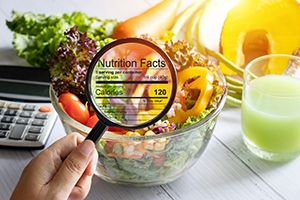
Special skin mineral supplementation is not necessary as long as patients make educated dietary choices.
How do I tell patients to eat for healthy skin?
What constitutes a healthy diet has to be one of the greatest enigmas in medicine. Food is more abundant in the United States than ever; yet, diet-related disease is rampant as evidenced by the dramatic increase in obesity. An attempt at understanding nutrition developed during WWII was named the recommended daily allowance (RDA), which is still found on food packaging today. The first RDA was accepted in 1941 to establish the minimal nutrition needs for military troops with revisions occurring every five to 10 years. However, the RDA is the minimum dietary requirements, not the optimal diet for health. As a matter of fact, the lack of controlled trials as it relates to diet was recognized at the 2007 meeting.
It is well recognized that certain nutrients are essential for skin health. These include Vitamins A, C, and E. It has also been suggested that these nutrients are best consumed as foods, rather than supplement pills. What foods should be recommended?
- Vitamin A is an antioxidant necessary for gene transcription and immune function that can be obtained by eating 2/3 cup of carrots daily.
- Vitamin C, necessary for collagen production and immune function, is a water-soluble antioxidant best consumed by eating one raw tomato daily.
- Vitamin E, the fat-soluble skin antioxidant, can be obtained by eating one-half avocado daily.
These are easy dietary recommendations that can be shared with the patient who wants to get plenty of “skin vitamins” daily.
On a limited calorie diet, how can patients get all the antioxidants they need?
One of the current diet challenges affecting the United States is the consumption of too many calories and not enough antioxidants. This makes it challenging to get adequate antioxidants while minimizing caloric consumption, but it can be accomplished.
- One half-cup of dried blueberries contains 13,427 antioxidants, including anthocyanidin and quercetin.
- One raw apple with skin contains 8,000 phytochemicals.
- One slice of watermelon provides the daily allowance of lycopene
- One-half avocado provides the daily allowance of lutein/zeaxanthin, which are important water-soluble antioxidants.
All of these foods are low calorie and widely available year-round in the United States.
Do patients need mineral supplementation for great skin?
Most minerals in the diet come from the soil in which plants are grown. If the soil is mineral depleted, so will the foods. A very important mineral antioxidant is selenium obtained from wheat grown in the selenium-rich soil of the Midwestern United States.
However, new growing technique and genetically modified wheat with smaller stalks and larger grain heads is depleting the soil. An excellent source of selenium is one Brazil nut daily. Zinc and calcium are necessary for matrix metalloproteinase (MMP) functioning. Calcium can be easily obtained from milk products while two prunes daily will provide sufficient zinc.
Special skin mineral supplementation is not necessary as long as patients make educated dietary choices.
"eat" - Google News
July 22, 2020 at 05:33PM
https://ift.tt/32J48wv
How to eat for healthy skin - Dermatology Times
"eat" - Google News
https://ift.tt/33WjFpI
https://ift.tt/2VWmZ3q
Bagikan Berita Ini














0 Response to "How to eat for healthy skin - Dermatology Times"
Post a Comment